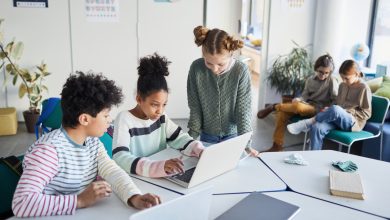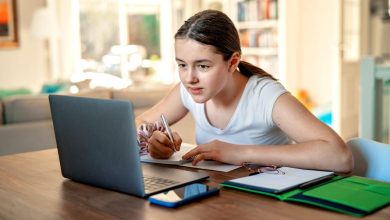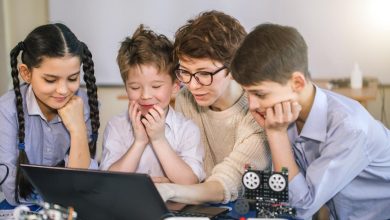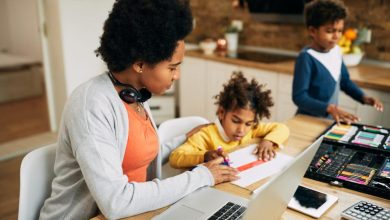Remote Learning For K–12 What Works And What Doesn’T
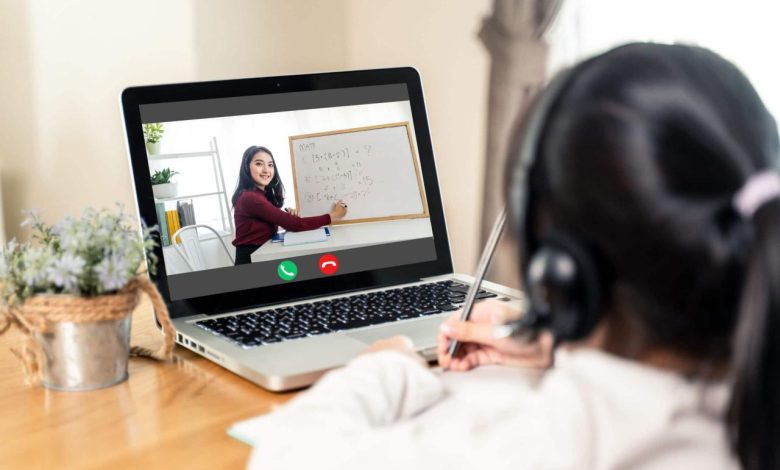
Remote Learning for K–12: What Works and What Doesn’t sets the stage for this enthralling narrative, offering readers a glimpse into a story that is rich in detail and brimming with originality from the outset. The evolution of remote learning has transformed educational landscapes, especially in recent years, prompting educators and students alike to adapt to new modes of instruction. As remote learning platforms gain traction, understanding effective strategies and identifying challenges become paramount to enhancing the educational experience for K–12 students.
Overview of Remote Learning in K–12
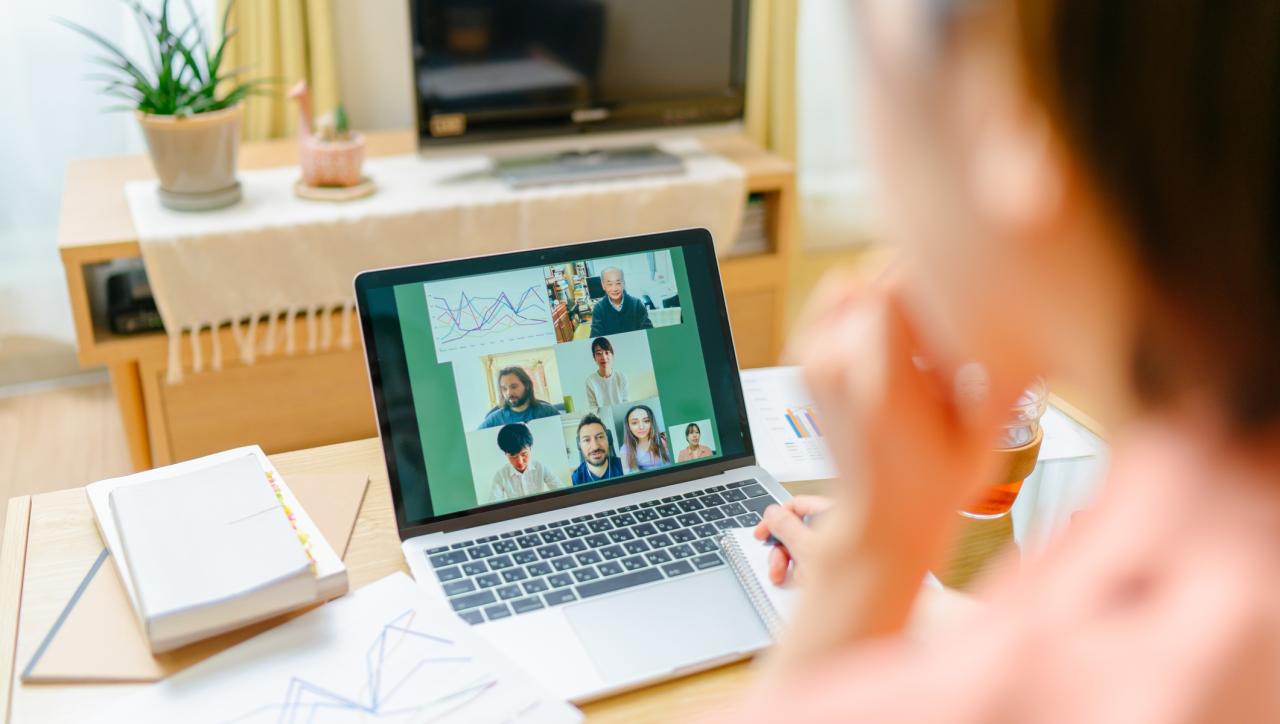
The landscape of K–12 education has undergone a significant transformation with the advent of remote learning, which has evolved from a niche offering to a mainstream necessity. This evolution has been expedited by advances in technology and the recent global events that prompted educational institutions to adapt rapidly. As remote learning continues to shape educational methodologies, understanding its trajectory, adoption, and implications is essential for stakeholders in the education sector.
The adoption of remote learning tools and platforms has surged in recent years. Prior to the COVID-19 pandemic, the percentage of K–12 students engaged in online learning was modest, with estimates indicating around 20% of students participating in some form of distance education. However, as schools transitioned to virtual environments, this figure skyrocketed. According to a report from the National Center for Education Statistics (NCES), by the end of the 2020-2021 academic year, approximately 93% of public school students were engaged in remote learning at some point, illustrating a remarkable shift in educational delivery.
Key Differences Between Traditional and Remote Learning Environments
The distinctions between traditional and remote learning environments are pivotal in understanding the effectiveness and challenges associated with each approach. Traditional learning typically occurs in physical classrooms, allowing for direct face-to-face interaction between teachers and students. In contrast, remote learning relies on digital platforms for instruction, necessitating a different engagement strategy.
The following aspects highlight the key differences between these two educational paradigms:
- Interaction and Engagement: Traditional learning promotes immediate interaction, where students can ask questions and receive instant feedback. Remote learning, while also interactive, often involves scheduled virtual sessions and may require more proactive engagement from students to participate actively.
- Resource Accessibility: In traditional settings, physical resources like textbooks and materials are readily available. Remote learning facilitates access to a vast array of digital resources, including e-books and online databases, but requires reliable internet connectivity and digital literacy skills.
- Flexibility: Remote learning offers greater flexibility in terms of scheduling and pace, allowing students to learn at their own speed. Conversely, traditional learning typically follows a fixed timetable, which may not cater to individual learning paces.
- Assessment and Feedback: Assessment methods differ significantly; traditional classrooms often use in-person exams and quizzes, while remote learning may utilize online assessments that can include a range of formats, from multiple-choice quizzes to project-based evaluations.
In summary, while both traditional and remote learning environments aim to facilitate education, their methodologies, interactions, and resource utilizations differ fundamentally, impacting student experiences and outcomes.
Effective Strategies for Remote Learning
Effective remote learning requires the adaptation of traditional teaching methods to a digital environment. Educators must employ strategies that facilitate engagement, promote active participation, and sustain motivation among students. This section discusses key teaching methods and activities that have proven successful in remote learning settings.
Teaching Methods in Remote Learning
Several effective teaching methods enhance learning outcomes in virtual classrooms. These methods focus on interaction, collaboration, and personalized learning experiences. Among the most impactful are:
- Synchronous Learning: This method involves real-time instruction where students and teachers interact during scheduled class times, fostering a sense of community.
- Asynchronous Learning: This approach provides flexibility, allowing students to access materials and complete assignments at their convenience, accommodating diverse learning paces.
- Blended Learning: Combining online digital media with traditional face-to-face classroom methods, blended learning offers a holistic educational experience that can cater to various learning styles.
- Project-Based Learning: Engaging students in projects encourages critical thinking and collaboration, allowing them to apply their skills to real-world problems.
Engaging Activities for Student Participation
To maintain high levels of engagement, educators can implement interactive activities that stimulate participation. These activities are essential for creating a dynamic learning environment. Examples include:
- Virtual Group Discussions: Utilizing breakout rooms for small group discussions enables students to share ideas and collaborate on solutions, fostering a sense of community.
- Online Quizzes and Polls: Real-time quizzes and polls can provide immediate feedback on student understanding while keeping the learning experience lively and interactive.
- Gamification: Integrating game elements into lessons, such as points, badges, and leaderboards, motivates students to engage with the content actively.
- Interactive Multimedia Presentations: Using videos, animations, and interactive slideshows can help illustrate concepts and keep students interested.
Strategies for Maintaining Student Motivation
Maintaining motivation and focus in a remote learning environment can be challenging. Implementing specific strategies can significantly enhance student engagement and concentration. Key strategies include:
- Setting Clear Goals: Establishing clear, achievable objectives for each class helps students understand expectations and fosters a sense of purpose.
- Personalized Learning: Tailoring learning experiences to individual student needs and interests can boost motivation and engagement.
- Regular Feedback: Providing constructive feedback on assignments and participation encourages students to stay involved and make improvements.
- Creating a Routine: Encouraging students to establish a consistent learning schedule helps them develop discipline and maintain focus.
- Incorporating Breaks: Strategically placed breaks during classes can help refresh students’ minds and prevent fatigue, keeping them engaged throughout the session.
“Engagement is not just about interaction; it’s about creating an environment where students feel connected and valued.”
Challenges Faced in Remote Learning
Remote learning in K–12 education has transformed the way students and educators engage with the curriculum. However, this shift has not come without its challenges. Numerous obstacles hinder the effectiveness of remote learning, influencing both teaching and learning experiences. Understanding these challenges is integral to developing effective strategies that can enhance the remote learning environment.
Obstacles Encountered by Educators
Educators face numerous obstacles when transitioning to remote learning. These include:
- Technological Proficiency: Many educators are not adequately trained in utilizing digital platforms, which can lead to ineffective delivery of lessons.
- Engagement Levels: Maintaining student engagement in a virtual environment is often more challenging than in traditional classrooms, as distractions abound at home.
- Assessment Difficulties: Evaluating student performance remotely presents challenges in ensuring academic integrity and accurately measuring understanding.
- Communication Barriers: The lack of face-to-face interaction can hinder clear communication, making it difficult for teachers to gauge student comprehension or emotional well-being.
Disparities in Technology Access
Technology access disparities significantly impact students’ ability to participate in remote learning. The following factors illustrate the extent of this issue:
- Device Availability: Not all students have access to devices such as laptops or tablets necessary for online learning, creating inequities in educational opportunities.
- Internet Connectivity: Reliable internet access is a requirement for effective remote learning. Students in rural or low-income areas may lack stable connections, further widening the achievement gap.
- Digital Literacy: Students from diverse backgrounds may have varying levels of digital literacy, affecting their ability to navigate online learning tools and platforms.
Psychological and Social Challenges
The remote learning environment can also lead to various psychological and social challenges for students. These challenges include:
- Isolation: Students may feel isolated due to the lack of social interaction with peers, which can lead to feelings of loneliness and disconnection.
- Anxiety and Stress: The uncertainty surrounding education during remote learning, combined with personal circumstances, may heighten anxiety levels among students.
- Family Dynamics: Challenges at home, such as the presence of multiple family members needing to use the same device or space, can create stressful learning conditions.
- Lack of Routine: The absence of a structured daily routine can lead to difficulties in time management and self-discipline, adversely affecting academic performance.
Tools and Technologies for Remote Learning
The transition to remote learning has been significantly facilitated by various tools and technologies that enhance the educational experience for K–12 students. These tools range from platforms that support virtual classrooms to applications that allow for content creation and collaboration. The effective use of such technologies not only addresses the immediate needs of remote education but also promotes an engaging and interactive learning environment.
An array of tools and platforms are essential for effective remote learning, offering various functionalities that cater to different educational needs. Below is a list of some of the most vital tools utilized in remote learning settings:
- Learning Management Systems (LMS): Platforms like Google Classroom and Canvas provide an organized environment for course management, allowing educators to distribute assignments, track progress, and communicate with students effectively.
- Video Conferencing Tools: Applications such as Zoom and Microsoft Teams facilitate real-time interaction between teachers and students, fostering a classroom-like atmosphere despite physical distances.
- Collaboration Tools: Tools like Padlet and Jamboard enable students to work together on projects in a shared digital space, enhancing teamwork and communication skills.
- Content Creation Tools: Platforms such as Nearpod and EdPuzzle allow educators to create engaging multimedia lessons that integrate videos, quizzes, and interactive activities.
- Assessment Tools: Tools like Kahoot! and Quizizz provide interactive quizzes and games that help assess student comprehension in a dynamic manner.
Comparison of Learning Management Systems
Learning Management Systems are pivotal in organizing and delivering educational content remotely. Various LMS options exist, each with unique features and usability that cater to different educational environments. Below is a comparative analysis of some prominent LMS options based on their key features and user experience.
| LMS | Key Features | Usability |
|---|---|---|
| Google Classroom | Integration with Google tools, easy assignment distribution, real-time feedback. | User-friendly interface, accessible for beginners. |
| Canvas | Customizable courses, extensive integrations, robust analytics. | More complex but highly functional for advanced users. |
| Moodle | Open-source flexibility, extensive plugins, strong community support. | Customizable but may require technical expertise for setup. |
| Schoology | Collaboration features, content library, integrated assessment tools. | Intuitive design, suitable for both instructors and students. |
Leveraging Multimedia Resources in Remote Learning
Multimedia resources play a crucial role in enhancing remote learning by catering to various learning styles and keeping students engaged. Educators can utilize a variety of multimedia formats, such as videos, podcasts, and interactive simulations, to create a dynamic learning environment.
Incorporating multimedia resources offers several advantages:
“The use of multimedia can enhance student comprehension and retention by aligning with their diverse learning preferences.”
For instance, educators can use instructional videos to explain complex concepts, which students can revisit as needed. Podcasts provide an auditory learning experience, allowing students to absorb information during commutes or while engaging in other activities. Interactive simulations enable students to explore concepts in a hands-on manner, fostering experiential learning that traditional methods may not provide.
Moreover, utilizing visual aids such as infographics and slide presentations can help summarize and emphasize key points, making it easier for students to grasp important information. By combining these various multimedia resources, educators can create a rich and effective remote learning experience that addresses the diverse needs of K–12 students.
Student Assessment in Remote Learning Environments
Assessing student performance in remote learning environments presents unique challenges and opportunities. As education shifts from traditional in-person settings to online platforms, educators must adapt their assessment methods to effectively gauge student understanding and progress. This segment explores various assessment techniques suitable for remote learning, highlights alternative assessment strategies, and emphasizes the critical role of feedback and communication in enhancing the assessment process.
Methods for Assessing Student Performance
In a remote learning environment, traditional assessment methods such as standardized tests and in-class quizzes may be less effective. Instead, educators can employ a variety of innovative assessment methods that are more suited to online platforms. These methods include:
- Formative Assessments: Continuous assessments such as quizzes, polls, and interactive assignments help gauge student understanding throughout the learning process.
- Performance-Based Assessments: Assignments that require students to demonstrate their knowledge through projects or presentations allow for deeper engagement with the material.
- Digital Portfolios: Students can compile their work over time, showcasing their learning journey and skills development.
Alternative Assessment Techniques
Traditional assessment methods may not fully capture student learning in a remote setting. Alternative assessment techniques can provide a broader understanding of student abilities and knowledge. Examples include:
- Peer Review: Students assess each other’s work, fostering collaboration and critical thinking.
- Reflective Journals: Encouraging students to maintain journals where they reflect on their learning experiences can provide insights into their understanding.
- Online Discussions: Facilitated discussions can serve as informal assessments of student comprehension and engagement with the material.
Importance of Feedback and Communication
Feedback and communication are essential components of the assessment process in remote learning environments. Timely and constructive feedback helps students understand their strengths and areas for improvement. Regular communication between educators and students fosters a supportive learning atmosphere.
“Effective feedback is not merely about correcting mistakes; it is a vital process that guides students toward deeper understanding and mastery.”
To facilitate effective feedback, educators can use various tools such as video comments, written feedback, and personalized emails. Clear communication about assessment criteria and expectations allows students to take ownership of their learning and strive for continuous improvement.
Overall, adapting assessment strategies to fit the remote learning context is crucial for accurately measuring student performance, promoting engagement, and ensuring academic success.
Parental Involvement in Remote Education
In the landscape of remote education, parental involvement has emerged as a critical factor influencing student success. Parents play a pivotal role in not only supporting their children’s academic performance but also in fostering a positive and productive learning environment at home. Their engagement can significantly enhance a child’s motivation, organizational skills, and overall learning experience during these unconventional times.
Active parental involvement in remote learning can take many forms, ranging from facilitating study schedules to engaging in discussions about educational content. By understanding their role, parents can better support their children’s learning journey. Creating a strategic partnership between home and school is essential, as it encourages a cohesive approach to education that benefits the student.
Strategies for Fostering Effective Home-School Communication
Effective communication between parents and teachers is vital for ensuring that students receive the support they need. Establishing a direct line of communication helps address concerns, share progress, and reinforce learning objectives. Here are several strategies to enhance home-school communication during remote learning:
– Regular Updates from Teachers: Schools should provide consistent updates regarding curriculum changes, assessment schedules, and available resources.
– Parent-Teacher Meetings: Schedule virtual meetings to discuss individual student progress and strategies for improving academic outcomes. These meetings can be held monthly or quarterly.
– Utilization of Communication Platforms: Implement online platforms that facilitate interaction between parents and teachers, allowing for quick sharing of information and feedback.
– Encouragement of Open Dialogue: Parents should feel comfortable reaching out to teachers with questions or concerns, promoting a collaborative atmosphere focused on student success.
Creating a Conducive Learning Environment at Home
A well-structured learning environment is essential for remote education. Parents can take proactive steps to create a space that minimizes distractions and maximizes focus. The following tips can help establish an effective learning atmosphere:
– Designate a Specific Learning Area: Allocate a quiet, well-lit space in the home solely for educational activities. This area should be free from distractions such as television or loud noises.
– Establish a Consistent Routine: Implement a daily schedule that mirrors a traditional school day, incorporating time for learning, breaks, and recreational activities. Consistency helps children understand the expectations of their remote learning environment.
– Provide Necessary Supplies: Ensure that students have access to all required school supplies, including technology, stationery, and learning materials. This preparation can reduce stress and enhance their ability to focus on tasks.
– Encourage Independence: Teach children how to manage their time and assignments effectively, fostering a sense of responsibility and self-discipline in their learning process.
By actively engaging in their children’s remote education and establishing effective communication with teachers, parents can play a vital role in enhancing the educational experience. The collaboration between home and school nurtures a supportive framework that is essential for student success in remote learning environments.
Future of Remote Learning in K–12 Education
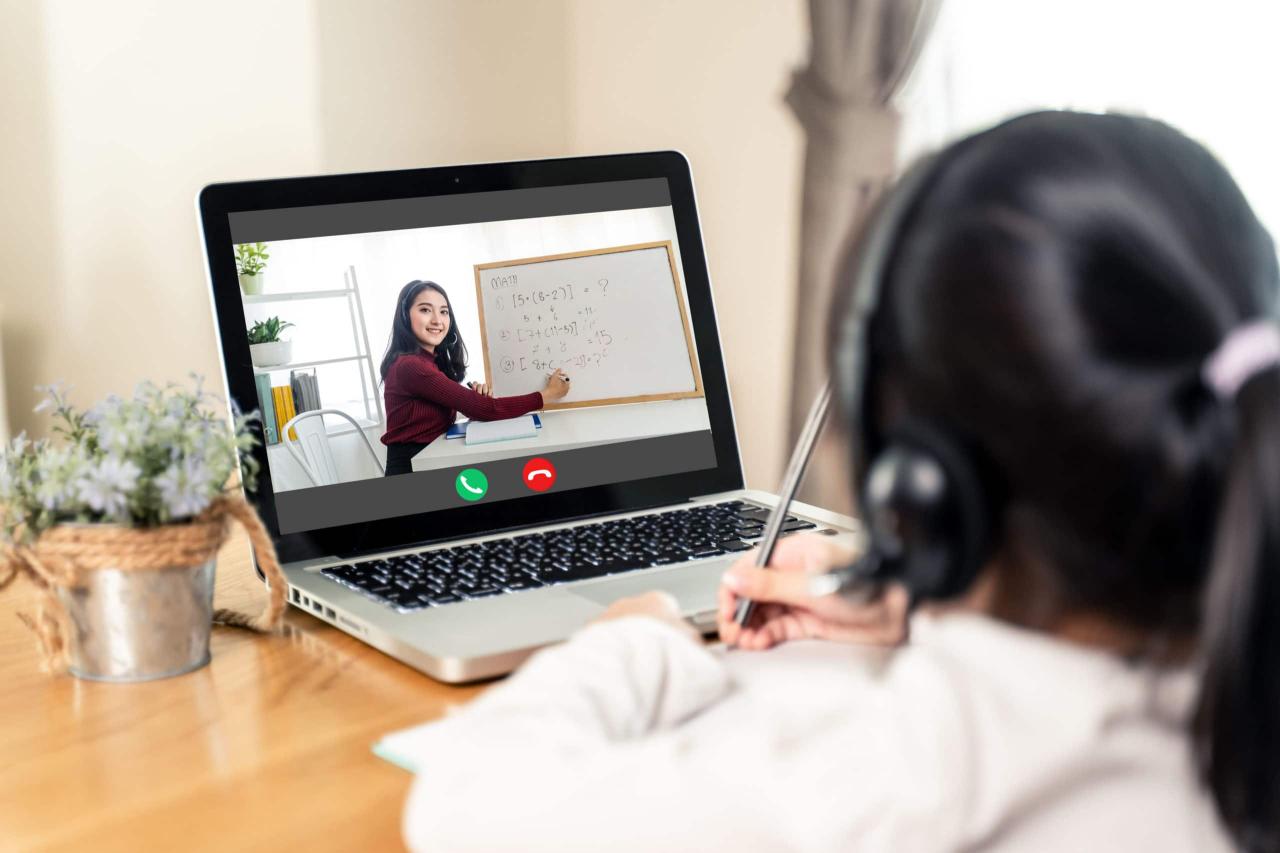
The future of remote learning in K–12 education is poised for transformation, driven by technological advancements and evolving pedagogical practices. As schools continue to adapt to the lessons learned during the pandemic, various trends are emerging that may significantly shape how education is delivered in the coming years. This section explores these trends, their potential impacts on educational practices, and the opportunities for professional development for educators.
Trends Shaping Future Remote Learning
As remote learning evolves, several key trends are expected to influence its trajectory. These trends include the integration of artificial intelligence, personalized learning experiences, and increased focus on digital citizenship. The following points elucidate these trends:
- Integration of Artificial Intelligence: AI tools are increasingly being utilized to enhance personalized learning experiences. Adaptive learning platforms can assess student performance in real-time, allowing for tailored educational content that meets individual needs.
- Focus on Personalized Learning: There is a growing emphasis on student-centered learning approaches. Schools are adopting flexible curricula that promote autonomy, enabling students to learn at their own pace and pursue interests that engage them more deeply.
- Expansion of Hybrid Learning Models: Combining both in-person and remote learning, hybrid models provide flexibility and accessibility. This trend is particularly beneficial for diverse learning environments, accommodating various student needs and preferences.
- Increased Emphasis on Digital Citizenship: As students engage more with technology, there is a critical need to instill responsible digital behavior. Educational institutions are incorporating digital citizenship into their curricula to prepare students for ethical online engagement.
Long-term Impacts of Remote Learning on Educational Practices
The shift to remote learning has profound implications for long-term educational practices. Key impacts include the redefinition of classroom dynamics, collaboration among educators, and the role of assessment. The following insights highlight these developments:
- Redefinition of Classroom Dynamics: Remote learning has transformed traditional classroom structures, fostering a more interactive and collaborative learning environment. This shift encourages active participation and peer-to-peer learning, which may persist beyond the pandemic.
- Collaboration Among Educators: The necessity for sharing resources and strategies has led to greater collaboration among teachers. Professional learning communities are becoming more prevalent, facilitating knowledge exchange and the development of best practices in remote instruction.
- Evolution of Assessment Methods: Traditional assessment methods are being reevaluated in remote contexts. Formative assessments and project-based evaluations are gaining traction, allowing for a more comprehensive understanding of student learning outcomes.
Opportunities for Professional Development for Educators, Remote Learning for K–12: What Works and What Doesn’t
As education adapts to the demands of remote learning, there are significant opportunities for professional development tailored to the needs of educators. The following strategies highlight areas for growth:
- Training in Digital Tools: Educators need ongoing training in the latest digital tools and technologies that facilitate remote instruction. Professional development programs can focus on effective use of platforms such as Google Classroom, Zoom, and learning management systems.
- Workshops on Pedagogical Strategies: Workshops that explore innovative pedagogical strategies suited to remote learning contexts can empower educators to design engaging and effective online lessons.
- Building Digital Literacy Skills: Professional development focusing on enhancing educators’ digital literacy is essential for effective teaching in remote environments, equipping them to navigate and integrate technology into their practice.
- Encouraging Community Engagement: Training that emphasizes strategies for fostering parental involvement and community engagement in remote learning can lead to improved student outcomes and a supportive learning environment.
Conclusive Thoughts
In conclusion, effective remote learning for K–12 presents both opportunities and challenges that require ongoing adaptation and innovation. As we navigate this evolving educational landscape, it is essential to recognize the significance of strategic engagement, technological access, and collaborative efforts between educators and families. By embracing these elements, we can pave the way for a brighter future in remote learning that benefits all students.
FAQ Corner: Remote Learning For K–12: What Works And What Doesn’t
What are the benefits of remote learning in K–12?
Remote learning offers flexibility, accessibility, and personalized learning experiences that can cater to diverse student needs.
How can parents support their children’s remote learning?
Parents can create a structured schedule, establish a dedicated learning space, and maintain open communication with educators.
What tools are essential for successful remote learning?
Key tools include learning management systems, video conferencing platforms, and collaborative software that facilitate interaction and engagement.
How do assessments work in remote learning settings?
Assessments in remote learning can utilize various methods, including online quizzes, project-based evaluations, and regular feedback sessions.
What challenges do students face in remote learning environments?
Students may encounter technology access issues, lack of social interaction, and difficulties maintaining motivation in a virtual setting.


